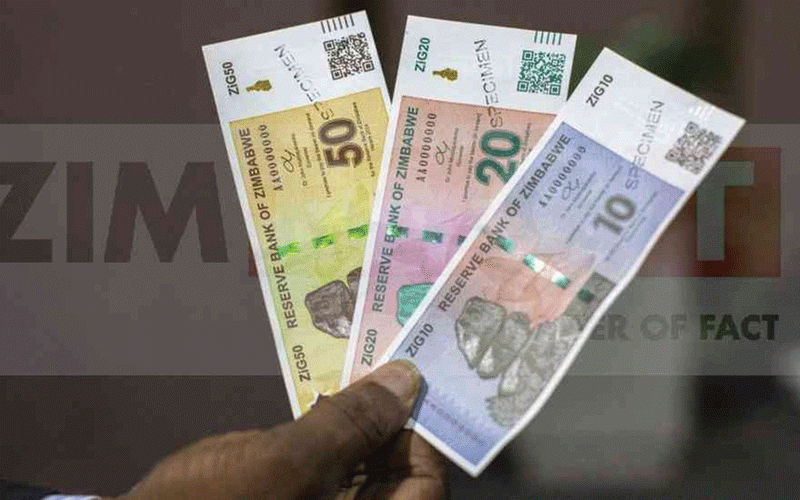
CHROME is an essential industrial commodity. Over 90% of the world’s chrome output is used to make ferrochrome, which is a mixture of chrome and iron ore, manufactured through a high-temperature smelting process.
The chrome content in ferrochrome is generally between 50%-70%, by weight. The ferrochrome is in-turn used in the manufacturing of stainless steel, which is made through a mixture of iron ore and ferrochrome.
Stainless steel products contain between 10-30% of chrome. The qualities of chrome enable steel to be stronger and rust-resistant. Widespread uses of stainless steel range from cutlery, utensils (pots, saucepans, etc), home appliances (such as irons, fridges, stoves), kitchen sinks, medical equipment, construction materials, airframes (aeroplane bodies) to vehicle and aeroplane engines, among others.
The small remainder of global chrome output, which is not used in stainless steel manufacturing (about 5%), is used in the production of the following products: paints, ceramic tiles, wood preservation products, etc.
In the steel industry, chrome is irreplaceable, as it does not have a feasible substitute. Due to its importance, the United States Geological Survey has declared chrome to be one the United States’ most important and strategic minerals.
As of 2019, the US imports about 71% of its needs, with the rest (29%) being provided from recycled stainless steel. The US uses at least 6% of the world’s chrome output, with none being mined in the country.
China, on the other hand, is the largest manufacturer of stainless steel, making up as much as half (55%, in 2023) of global supply (of stainless steel).
However, just like the US, it has no sources of the mineral, within its territory. Therefore, it also resorts to the importation of chrome ore and ferrochrome, in order to keep its critical steel industries operational.
- News in depth: Chinese scramble for Zim’s chrome leaves communal lands scarred
- News in depth: Chinese scramble for Zim’s chrome leaves communal lands scarred
- Tennis ace Lock delights in Davis Cup promotion
- MMCZ moves to tackle chrome price crisis
Keep Reading
Some reports indicate that China imports 84% of global chrome production. If true, that would mean that, China and the US only, are responsible for about 90% of global chrome consumption (84% + 6%, respectively).
In terms of chrome ore mining, there are only six countries, which have the capacity to produce more than one million tonnes, annually. These are South Africa, Turkey, Kazakhstan, India, Finland and Zimbabwe, which produced 18 million tonnes, 6,9 million tonnes, 6,5 million tonnes, 4,2 million tonnes, 2,2 million tonnes and 1,5 million tonnes, respectively, in 2022.
As for South Africa, it has about 72% of the world’s commercially-accessible chrome reserves and produces almost half (50%) of global production, each year.
Zimbabwe has also been fortunately endowed, as it has 12% of the world's chrome ore reserves. However, due to a number of challenges pertaining to the sector, the country currently produces less than 4% of the world's total output.
Countries with less reserves, such as Turkey, Kazakhstan, India and Finland, are already producing more than twice Zimbabwe’s output, even though they have far less reserves of the mineral in their ground.
Of the aforementioned three countries, Kazakhstan has about 4% of the world’s reserves, whilst Finland has 2%. Turkey and India, on the other hand, have less than 1% of global reserves each.
Why Zim underperforms
The chrome value chain in Zimbabwe is subject to a number of negative issues:
Firstly, although the country’s chrome is generally of a higher-grade than South Africa’s, local miners (especially small-scale miners) sell their product for much less.
The South African chrome ore grade “UG2/MG”, with lower chrome content, was being purchased at around US$281 per tonne in January 2023, whilst Zimbabwean miners were being offered a mere US$70 per tonne.
Other authorities in chrome mining, including, Tharisa Minerals, a major chrome and platinum miner in South Africa, insist that Zimbabwean chrome is comparable to Turkish chrome, which was selling for around US$350-US$360 per tonne, in the same period (January 2023).
These disparities, simply mean that local small scale chrome miners cannot expand their production, and sometimes have to close down their operations due to a lack of viability, arising from the artificially depressed prices.
Reports indicate that local ferrochrome producers (smelters), manipulate the price of chrome ore sometimes, as they buy from the small-scale miners, who at times have nowhere to sell, due to frequent export bans, which the government institutes, in order to protect and support local chrome smelters (ferrochrome producers).
Large-scale miners usually have their own smelters, and are less affected by such pricing challenges.
Secondly, both the country’s chrome miners and smelters (ferrochrome producers) have challenges with transportation and “high” electricity charges.
The lack of a reliable railway system means that they need to use freight trucks for delivering raw materials (chrome ore) to their plants and offloading the processed goods (ferrochrome) for the export markets (at Maputo, Beira and other South African ports).
This is a huge disadvantage because road freight moves much less chrome ore and ferrochrome, when compared to railway. Road freight is also significantly expensive.
Without a reliable railway infrastructure, the processors will continue to produce below their optimal levels.
The local electricity tariffs are also considered high by the processors because chrome ore needs to be smelted at temperatures above 1 600⁰C for it to be transformed into ferrochrome.
Thus, the smelting companies are continually pleading with government so that they can access cheaper electricity, even though they already enjoy lower tariffs than the rest of Zesa’s clients. At times Zesa charges the smelters only US$0,06 per kilowatt, a low rate, even though the producers request an even lower one.
Thirdly, the government is still struggling to develop a consistent and mutually effective chrome policy, which mutually benefits small scale miners, smelting companies (ferrochrome producers), local communities, and the overall economy.
This is evidenced by the inconsistent policies pertaining to chrome, over the last two decades. For example, chrome ore export bans were instituted between 2007-2009, 2011-15, but were eventually lifted, due to the lack of capacity on the part of local processors (smelters), to purchase available chrome ore.
Several times, small-scale miners have had to shut down their operations since domestic smelting companies could not purchase their output.
There is also a latest ban on raw chrome ore exports, which is still effective to date. This latest ban was announced in August 2021. Due to the mismatch between the capacities of smelting companies and chrome ore miners, alongside the frequent export bans, Zimbabwe's chrome output tends to be generally volatile, and remains below countries with smaller reserves such as Turkey, Kazakhstan, India and Finland.
An export tax on chrome ore exports was also instituted, from 2007, although lifted in 2015. If there was a consistent and effective chrome ore policy, Zimbabwe could have been the world’s second-largest producer of chrome ore, after only South Africa.
This would translate into greater GDP growth, foreign currency earnings and higher employment levels within the country.
Strategies for dominance
Coincidentally, much of the problems associated with Zimbabwe’s chrome sector are also troubling South Africa’s industry. Smelters in South Africa also consider their subsidised electricity charges to be extremely expensive, whilst they are being negatively affected by load shedding as well.
The South African government has also considered implementing a tax on chrome ore exports, so that they protect and support their smelting industries, which employ several thousands and are a key contributor to the revenue earned by the national electricity supplier, Eskom.
If the South African smelters go out of business, Eskom will lose much revenue while the economy struggles. To show the importance of ferrochrome producers in South Africa, they used to consume as much as 5% of national electricity supply, around 2013.
Since there are just six countries, which produce significant amounts of chrome, in the world, it is crucial for the six to establish a consultative forum, where they can discuss their common challenges and opportunities for collaboration.
It may be that, they are all struggling to sustain their operations (miners and smelters). If that is the case, they may need to emulate the brilliance of Opec (Organisation of the Petroleum Exporting Countries), whose members coordinate the output of petroleum products, for healthy returns (profits).
The 14-member countries of Opec understand that oil is a critical resource. Thus, they coordinate to ensure that their supplies to the rest of the world are kept at a level which is profitable for them.
When there is an oversupply of oil in the global markets, Opec members reduce their production, in order to create scarcity, which will then cause the price of oil to remain high.
This is profitable for them. In the same manner, the chrome-producing countries need to implement a uniform export tax on chrome ore (between 20%-50%), so that consuming countries cannot use one chrome producing country to compete against another (by its refusal to implement the tax). This will earn governments more revenue and lead to more chrome processing industries (smelters) being established in producer countries.
A universal tax on exports of chrome ore will also result in an increase in the price of ferrochrome (smelted, processed chrome), since there will be a greater flexibility for its price to increase.
This will also make the smelters more profitable and enable them to operate on normal electricity charges (tariffs).
As it is, Zimbabwe and South Africa, which have about 85% of the world’s chrome reserves, are struggling with viability. This clearly shows that they are subsidising the global price of both chrome and stainless steel.
This also means that they are subsidising the world economy, by accepting a lower price for chrome, than is economically viable for them.
Thus, instead of subsidising electricity for local smelting companies, the countries should work to ensure that the price of chrome and its associated products, is enough to cover all costs associated with its production.
Once the tax is effected, authorities and security services will also need to be on high-alert to ensure that electricity and railway infrastructure are not subject to sabotage, which may be as a result of reprisals from major global consumers, who might be unwilling to pay a higher price for the chrome.
Other changes, which will be crucial in the chrome value chain include encouraging smelting companies to establish their own power plants.
Licencing for such power stations should be expedited, whilst sustainable technologies, such as co-generation of electricity (through recovering heat from the factory to produce electricity) are promoted.
This will be crucial because chrome smelting is energy intensive. Without creating opportunities for independent power, ferrochrome producers may cause a serious shortage of electricity for the rest of the country.
Also, in order to encourage the growth of chrome extraction and the payment of competitive (fair) prices to small-scale miners, export bans will need to be suspended, so that miners can have access to more customers (local and foreign).
Finally, the railway infrastructure needs to be made available to both chrome miners and smelters, so that their costs of production are kept low and their output remains high.
When the challenges pertaining to the industry are effectively addressed, it is quite possible for Zimbabwe to triple its chrome output to five million tonnes, within the medium-term (1-3 years).
- Tutani is a political economy analyst. — [email protected]











